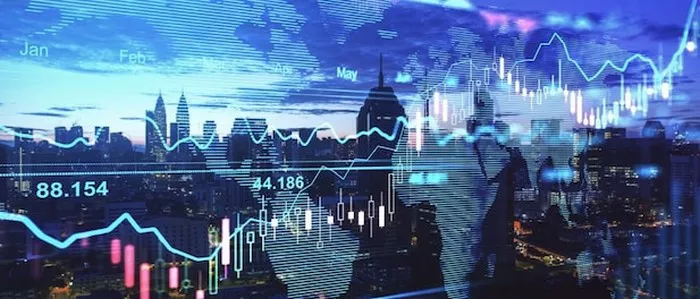Gold has been revered as a store of value and a symbol of wealth for millennia. Its scarcity, durability, and intrinsic beauty have made it a coveted asset throughout history, serving as a hedge against inflation, currency devaluation, and economic uncertainty. In today’s dynamic financial landscape, gold continues to play a significant role as an investment vehicle, with investors seeking exposure to its potential price appreciation and portfolio diversification benefits. In this article, we delve into the future of gold, exploring its value in futures markets and examining the factors that may influence its price trajectory in the years to come.
Understanding Gold Futures
Gold futures are financial contracts that obligate the buyer to purchase and the seller to deliver a specified quantity of gold at a predetermined price on a future date. These contracts are traded on commodity exchanges such as the Chicago Mercantile Exchange (CME) and provide investors with a means of gaining exposure to the price movement of gold without physically owning the underlying asset.
Gold futures serve several purposes for market participants, including hedging, speculation, and price discovery. Hedgers, such as gold miners and jewelry manufacturers, use gold futures to mitigate the risk of adverse price movements by locking in future prices for their gold production or inventory. Speculators, on the other hand, trade gold futures with the aim of profiting from anticipated price changes, leveraging their market insights and risk appetite to speculate on gold price movements. Additionally, gold futures markets facilitate price discovery by bringing together buyers and sellers to determine the fair market value of gold based on supply and demand dynamics, economic indicators, and geopolitical factors.
Factors Influencing Gold Futures Prices
Several factors can influence the price of gold futures, reflecting the complex interplay of supply and demand dynamics, macroeconomic trends, and market sentiment. Some key factors that may impact gold futures prices include:
1. Economic Indicators: Economic indicators such as inflation, interest rates, and GDP growth can have a significant impact on gold futures prices. Gold is often viewed as a hedge against inflation and currency depreciation, as it tends to retain its value in times of economic uncertainty or monetary instability. Additionally, changes in interest rates and monetary policy by central banks can affect the opportunity cost of holding gold versus other assets, influencing investor demand for gold futures.
2. Geopolitical Events: Geopolitical events such as geopolitical tensions, conflicts, and geopolitical uncertainty can drive demand for gold futures as a safe-haven asset. Investors may flock to gold as a store of value during periods of geopolitical instability, seeking refuge from market volatility and geopolitical risks. Geopolitical developments that threaten global stability or disrupt financial markets can spur investor demand for gold futures as a hedge against geopolitical risk.
3. Currency Movements: Gold prices are often inversely correlated with movements in the US dollar and other major currencies. A weaker US dollar typically boosts demand for gold futures as it makes gold more affordable for international buyers and enhances its appeal as an alternative store of value. Conversely, a stronger US dollar may weigh on gold futures prices by making gold more expensive for foreign buyers and reducing its attractiveness as a hedge against currency devaluation.
4. Investor Sentiment: Investor sentiment and market psychology can play a significant role in driving short-term fluctuations in gold futures prices. Bullish sentiment, fueled by optimism about economic growth, inflationary pressures, or geopolitical risks, can lead to increased demand for gold futures as investors seek to capitalize on potential price gains. Conversely, bearish sentiment, driven by concerns about deflation, economic downturns, or risk aversion, can trigger selling pressure on gold futures as investors liquidate their positions to minimize losses or rebalance their portfolios.
5. Supply and Demand Dynamics: Supply and demand fundamentals, such as gold production, consumption, and inventory levels, can influence gold futures prices over the long term. Changes in gold supply, such as fluctuations in mine production, recycling activity, or central bank sales, can impact the supply-demand balance and exert upward or downward pressure on gold futures prices. Similarly, shifts in gold demand, driven by factors such as jewelry consumption, investment demand, or central bank purchases, can affect gold futures prices by altering the equilibrium between supply and demand.
The Role of Gold in Future Investment Portfolios
Gold has long been recognized as a valuable asset for diversifying investment portfolios and preserving wealth over the long term. Its unique properties, including its scarcity, durability, and intrinsic value, make it an attractive hedge against inflation, currency devaluation, and systemic risks in financial markets. As such, gold is often used by investors as a strategic allocation within diversified investment portfolios to mitigate risk and enhance overall portfolio resilience.
In the future, gold is likely to continue to play a vital role in investment portfolios as investors seek to navigate a complex and uncertain global economic landscape. The potential for geopolitical tensions, currency volatility, and macroeconomic uncertainties underscores the importance of gold as a safe-haven asset and a store of value. Additionally, the rise of digital gold platforms and gold-backed cryptocurrencies may further democratize access to gold investments and broaden the investor base for gold futures markets.
Conclusion
In conclusion, gold futures represent a valuable tool for investors seeking exposure to the price movement of gold and the potential benefits of portfolio diversification and risk mitigation. The future of gold in futures markets is influenced by a myriad of factors, including economic indicators, geopolitical events, currency movements, investor sentiment, and supply-demand dynamics. As investors navigate evolving market conditions and seek to preserve wealth and achieve their financial goals, gold futures are likely to remain a cornerstone of diversified investment strategies, providing a reliable hedge against uncertainty and a timeless store of value in the years to come.

